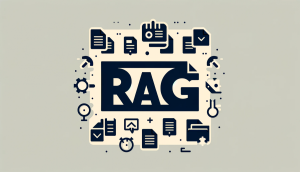Microsoft and CrowdStrike Update Issue: Insights and Solutions

IT professionals and end-users are alarmed and confused by recent changes to Microsoft and CrowdStrike technology image-replication processes, and the resultant updates to Microsoft and CrowdStrike products and services. Some of the effects of these issues seem modest, but they have wreaked havoc with the functionality and security of affected systems. This article explains what’s going on and why – from the technical details all the way to the management and policy-making level.
Background of the Microsoft and CrowdStrike Partnership
This security partnership between two of the cyber industry’s major players, Microsoft and CrowdStrike, reflects the collaboration between Microsoft, a leading developer of computer software, and CrowdStrike, a next-generation endpoint protection leader and publicly traded market leader, to become a market superpower. The collaboration between Microsoft’s cloud services and CrowdStrike’s endpoint and threat detection enables security for enterprise customers in an evolving world of cyber threats.
That said, the task of integrating these complex systems was never going to be easy. The recent update issues are just the latest indication of the complicated process of merging the functionalities of two dominant platforms. Though a useful partnership for both companies, it nevertheless risks points of failure, where an update to one part can negatively impact the other. Learning about the history of this partnership does help us understand the current problems and the knock-on problems for users.
Nature and Scope of the Update Issues
There have been many instances of update issues due to the relationship between Microsoft and CrowdStrike: from updates that disable CrowdStrike’s functionality, resulting in lapses in endpoint protection, to various issues that lead to systems running slower or crashing. CrowdStrike is also facing challenges in the underlying infrastructure required to support the DNS service.
The implications go well beyond individual users to large organisations and services These updates would create increased operational inefficiencies and increase security risks significantly, and as such the community has called for immediate action to address the problems. By looking at the constellation of these problems specifically, stakeholders will get a clearer picture of the exact issues they are up against, and understand the urgency behind the problems better.
Implications for Security and Performance
Here, the implications of the update problems reach beyond just performance: endpoint protection is a major component of computer security. Any break in CrowdStrike’s endpoint protection is a potential opportunity for a computer attack, and attackers are always on the hunt for new holes to exploit. It is unrealistic for Hail Mary too to replace a failing system. It is an IT services team’s dream job to be able to run a once-per-week update, shut down the datacentre overnight when not much activity happens anyway, and return on Monday morning to a completely updated system. Unfortunately, this is not a job many people get to have. So, the continuous endpoint protection will also be a key part in deciding when operating procedures and systemogo cannot be sacrificed and recovery Just Works can have devastating consequences. Hail Mary relies on being able to replace a system that fails.
When it comes to performance, if these updates come with problems, they can have dire consequences for operational productivity. Sites that run more slowly or crash more frequently will lose customers as those customers look for service somewhere else. Frequent disruptions can have a financial cost to the business, whether due to lost revenue or reduced efficiency. The effects of poor performance scale up as businesses rely on effective IT operations for customer service, supply chain coordination and many other core competencies. We want to resolve the issues brought on by these problems and reinstate our good performance.
Microsoft’s Response and Solutions
Subsequent to the disruption crises, Microsoft has engaged a series of practices aimed at repatriating those affected by the issue. Notably, Microsoft had been actively investigating the potential causes of the disruptions since news broke out, and was working with CrowdStrike to ensure compatibility between the products, along with the early introduction of patches and updates to help mitigate against the impact of the disruptions, market watch further notes.
Furthermore, Microsoft has clarified that moving ahead, it will uphold high levels of security and functionality. It will be tightening up its testing procedures to make sure that further updates don’t end up causing live-disrupting blips such as this one. If it solves the mysteries and repair the rifts and breakages in the relationship caused, the partners can continue to work together providing Windows 10 users with increasingly reliable updates and security features. This story originated in New Scientist, a sister publication of SIGMA.
CrowdStrike’s Response and Solutions
CrowdStrike has done the same, putting customer security and satisfaction as top priority, constantly monitoring the issue and working together with Microsoft to locate and fix the problems. It has issued its own security updates and patches to get around the issue and continue preventing attacks beyond the reach of Microsoft’s updates.
More recently, CrowdStrike has offered extensive support to its users, so that they can better understand and troubleshoot the problems caused by the update. The company is also now reinvesting back into itself: adding more upgraded technology and hardware to enhance its resilience to these problems in the future. CrowdStrike is trying its best to minimise the effects of its update problems, and to impress upon its customers how large a company it is, and the extent of its investment in doing the best job possible in cybersecurity.
Best Practices for Users to Mitigate Risks
But users are at risk and best practices can reduce those risks. The first is to keep updated backups of all critical data. The second is to keep up to date on updates from both Microsoft and CrowdStrike. Apply all patches and updates as soon as possible to take advantage of the latest versions.
Moreover, users can apply additional layers of security measures such as firewalls and intrusion detection systems that might be needed to maintain continuity until the primary problems are fixed. On an ongoing basis, system performance and security logs can be monitored to ensure that issues are identified and corrected in a timely fashion. This allows users to secure systems and the data they incorporate more successfully, lessens the risk of updates causing havoc in their IT infrastructures, and facilitates proficient, effective and sustainable continuity of IT services.
Conclusion
What these ordeals have made clear is that the best laid plans for integrating ‘hyper-agile’ security with cutting-edge ‘Intelligence-driven’ technology leave a lot of room for things to go wrong. While these issues are causing enormous disruptions, the proactive ways that both companies have reacted to address the problems and strengthen their partnership shows their commitment to solve for the pain. The faster that users understand the nature and implications of these update issues and take proactive measures to mitigate risks and protect the integrity of their IT environments, the faster they can thrive. What’s clear from these latest update issues is that the more we all embrace agility, communication and best practices for integration and collaboration the harder it will be to monetise cybercrime, and the better equipped we’ll all be to thrive and accomplish our shared mission.







